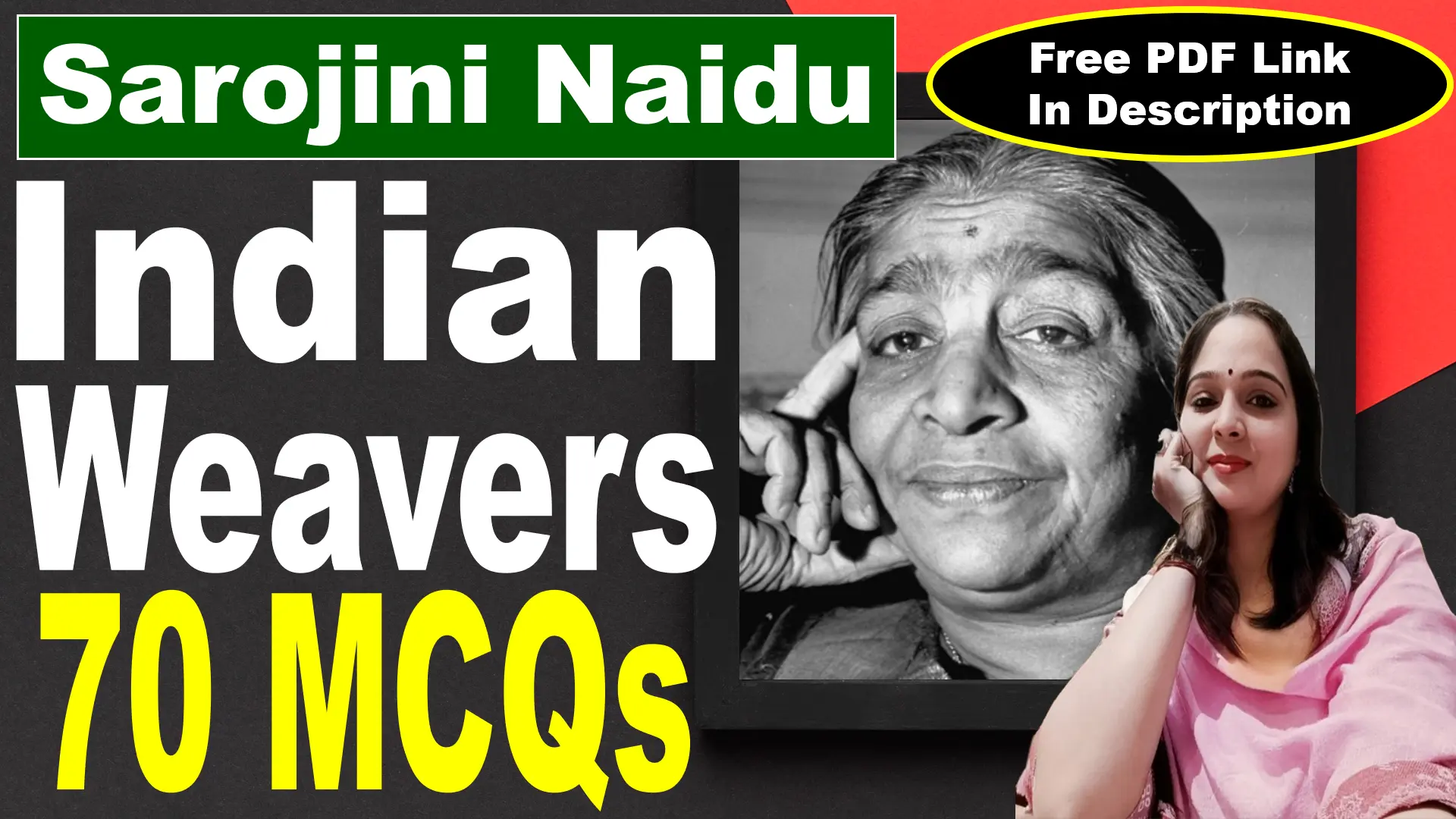Why does Kamala Das use free verse for The Dance of the Eunuchs?
A) To match the chaotic rhythm of life depicted in the poem
B) To adhere to traditional poetic forms
C) To create a musical structure for the poem
D) To emphasize the technical brilliance of her work
Answer: A) To match the chaotic rhythm of life depicted in the poem
Explanation: Free verse allows Kamala Das to capture the eunuchs’ chaotic and unstructured lives. Without fixed rhyme or rhythm, the form mirrors their emotional turbulence and societal rejection. This flexibility enhances the vivid imagery and raw emotions, emphasizing the despair and complexity of their marginalized existence.
What does the eunuchs’ dance symbolize in the poem?
A) Joyful celebration
B) A plea for recognition and acceptance
C) Rebellion against societal norms
D) Worship and devotion
Answer: B) A plea for recognition and acceptance
Explanation: The eunuchs’ vibrant yet sorrowful dance is a metaphor for their struggle for visibility and societal acknowledgment. While they perform with energy and color, their underlying despair reflects a deeper plea for acceptance. Kamala Das uses their dance to highlight their attempt to claim space in a society that marginalizes them.
What kind of imagery is used to describe the eunuchs’ performance?
A) Visual and auditory
B) Tactile and olfactory
C) Gustatory and kinesthetic
D) Auditory and gustatory
Answer: A) Visual and auditory
Explanation: Kamala Das employs vivid visual imagery (twirling skirts, tattoos) and auditory imagery (jingling anklets, clashing cymbals) to immerse readers in the scene. This combination brings the eunuchs’ performance to life, contrasting its vibrancy with their inner pain and underscoring the duality of their existence.
Which of the following best represents the duality in the eunuchs’ existence as depicted in the poem?
A) Passion vs indifference
B) Outward vibrancy vs inner despair
C) Acceptance vs rebellion
D) Love vs hatred
Answer: B) Outward vibrancy vs inner despair
Explanation: The eunuchs’ outwardly energetic and colorful performance contrasts sharply with their inner suffering and alienation. Kamala Das uses this duality to highlight the tension between their visible attempts at joy and the invisible despair caused by societal rejection, making their plight more poignant.
What does the thunderstorm towards the end of the poem signify?
A) A fresh start for the eunuchs
B) The climax of their pain and tension
C) A sign of nature’s forgiveness
D) An end to societal judgment
Answer: B) The climax of their pain and tension
Explanation: The thunderstorm reflects the emotional and societal turmoil surrounding the eunuchs. The storm’s intensity symbolizes the culmination of their suppressed pain, while the subsequent “meagre rain” underscores the futility of relief in their lives. Nature mirrors their despair, amplifying the poem’s emotional impact.
What does the “meagre rain” fail to achieve in the context of the poem?
A) Providing relief to the heat
B) Resolving societal issues
C) Soothing the eunuchs’ despair
D) Ending the poem’s narrative
Answer: C) Soothing the eunuchs’ despair
Explanation: The rain, often symbolic of renewal, fails to bring solace or relief to the eunuchs. Its inadequacy represents the fleeting and incomplete comfort they experience, paralleling their marginalized existence where any hope for acceptance or change remains unfulfilled and superficial.
How does Kamala Das highlight the eunuchs’ alienation in the poem?
A) By showing their complete detachment from society
B) By emphasizing their attempts to entertain despite rejection
C) By portraying them as indifferent to societal norms
D) By glorifying their unique culture
Answer: B) By emphasizing their attempts to entertain despite rejection
Explanation: Despite their colorful performance, the eunuchs are not truly accepted by society. Their desperate attempts to entertain and connect are met with mere observation, not understanding. Kamala Das uses this to emphasize their isolation, showing how societal rejection persists even in moments of vibrant self-expression.
What kind of response does Kamala Das invite from the reader through the poem?
A) Criticism of traditional norms
B) Sympathy and empathy for the marginalized
C) Celebration of diversity
D) Indifference to societal expectations
Answer: B) Sympathy and empathy for the marginalized
Explanation: By vividly portraying the eunuchs’ struggles and societal rejection, Kamala Das encourages readers to empathize with their pain and humanity. Her candid depiction of their dual existence—outwardly vibrant yet inwardly desolate—invites reflection on societal norms and the treatment of marginalized groups.
What does the oppressive heat in the poem symbolize?
A) Tension and discomfort in the eunuchs’ lives
B) A metaphor for joy and festivity
C) The warmth of societal acceptance
D) The fiery passion of their dance
Answer: A) Tension and discomfort in the eunuchs’ lives
Explanation: The oppressive heat mirrors the emotional and societal tension faced by the eunuchs. It represents the discomfort and stifling environment of their existence, emphasizing how societal rejection and marginalization weigh heavily on them, creating a metaphorical heat of alienation and despair.
What literary device does Kamala Das use to convey the eunuchs’ cyclical pain?
A) Symbolism
B) Repetition
C) Contrast
D) Hyperbole
Answer: B) Repetition
Explanation: Repetition, such as the recurring “jingling, jingling, jingling,” mimics the monotonous rhythm of the eunuchs’ lives. This device reflects the unchanging and cyclical nature of their struggles, emphasizing their inability to escape societal rejection and the repetitive despair that defines their existence.





